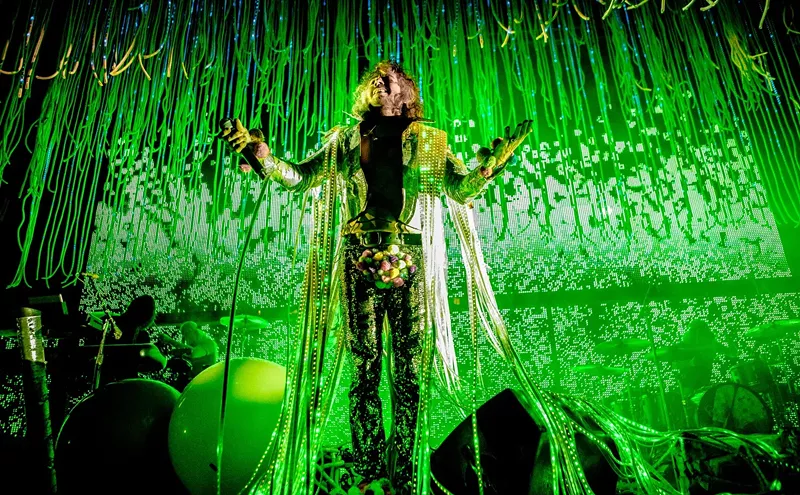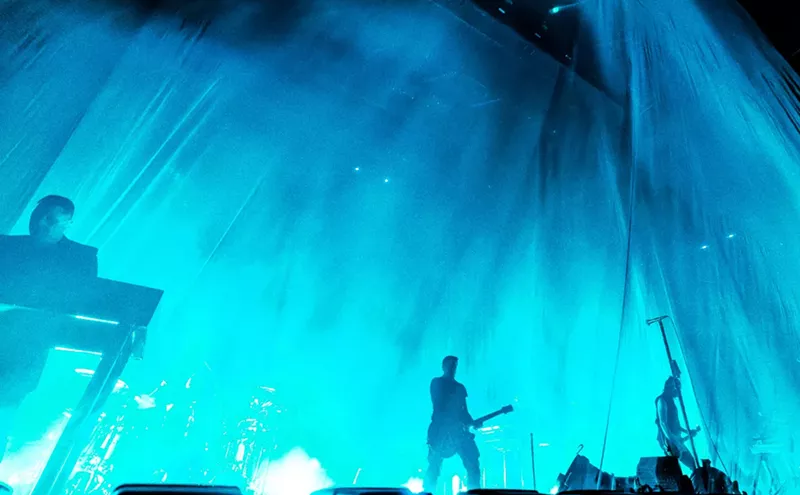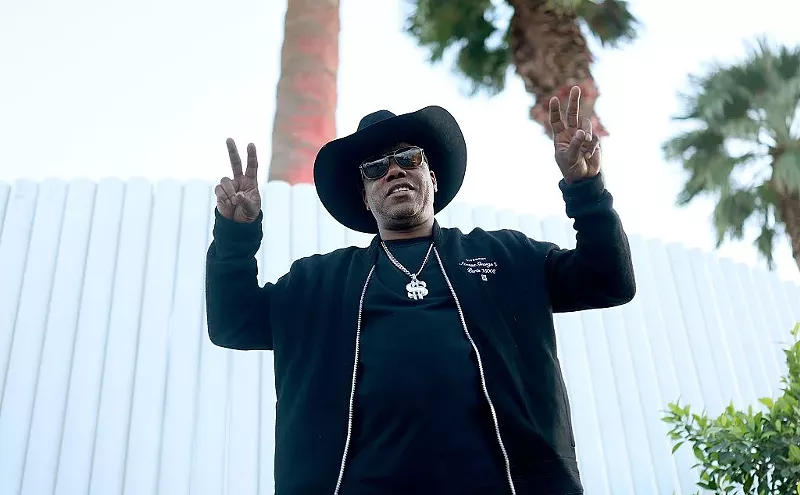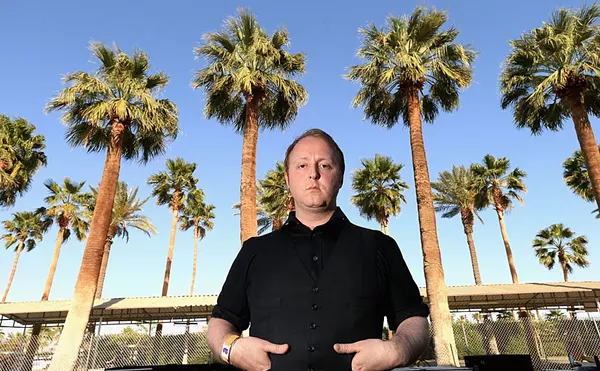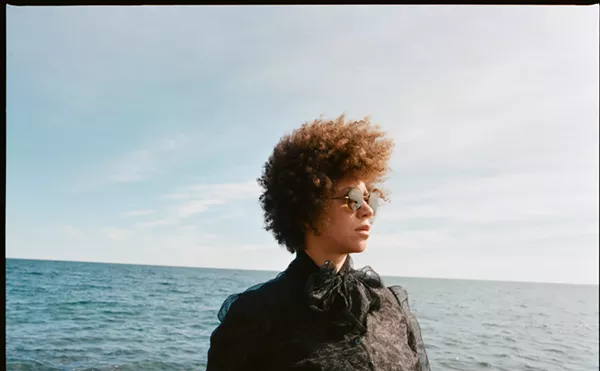In keeping with my role as Up on the Sun's resident metal geek, throughout 2011 I'll be looking back a quarter century at 10 iconic thrash metal albums of 1986. For my money, 1986 was the best year in the history of thrash metal -- and probably the genre as a whole -- giving us seminal releases by many of the genre's best acts. Each entry will coincide with the 25th anniversary of the album's release date and will feature interviews with people who were part of the recording process.
What is left to say about Master of Puppets that hasn't already been said? Widely considered to be one of the greatest metal albums of all time, Puppets was Metallica's major label debut and thrust the band into the public consciousness, despite their steadfast refusal to release a music video or radio-ready hit single.
Before 1986, Metallica was relatively unknown to the general public, still honing their chops in the Bay Area's underground thrash metal scene that also included Exodus, Possessed, Death Angel and Testament. Their two previous albums - 1983's Kill 'Em All and 1984's Ride the Lightning - had earned them attention from metalheads in the know, but Puppets was the album that brought Metallica, and thrash metal as a whole, out of the underground. From the lush acoustic intro to "Battery" to the hyperspeed closer, "Damage, Inc.," the album became a template for numerous thrash metal releases to follow.
Sadly, while Puppets marked the beginning of Metallica's mainstream popularity, it also started a downward spiral for the band that started with bassist Cliff Burton's death later that year and ultimately resulted in such lamentable releases as Load, ReLoad and St. Anger, to say nothing of the band's controversial 1991 self-titled album (a.k.a. "the Black Album") which, to purists like myself, took the term "sellout" to a whole new level.
Despite such later-era missteps, Master of Puppets remains as one of the high points in the history of metal, and if Metallica's 2008 release, Death Magnetic, is any indication, the band has seen the error of their ways and are desperately trying to make up for lost time.
To commemorate the 25th anniversary of this landmark album, I contacted Puppets producer and engineer, Flemming Rasmussen, for a Q&A about his work on the album. Rasmussen is the founder and owner of Sweet Silence Studios in Copenhagen, Denmark, where Metallica recorded Ride the Lightning and Master of Puppets. Rasmussed has also worked with such acts as Ritchie Blackmore's Rainbow, Morbid Angel, Blind Guardiian and, most recently, British retro-thrashers Evile.
I also interviewed Jim Brautigam, the son of artist Don Brautigam, who painted the iconic cover for Master of Puppets. Don, who passed away in 2008 from stomach cancer, also painted album covers for Mötley Crüe's Dr. Feelgood and AC/DC's The Razor's Edge, as well as numerous book covers for such authors as Stephen King and Dean Koontz.
Q&A with producer Flemming Rasmussen
Up on the Sun: Master of Puppets is widely regarded as one of the best heavy metal albums of all time. Did you know you were onto something special when you were working on it 25 years ago?
Jim Brautigam: I know that my father really liked the painting, and the success of it led to him doing more work in the genre. I remember that he always wished he had some more time to work on his paintings; many of them were done in only three or four days. Did he know they were on the cusp of greatness? I'm not really sure. He had done a lot of big time covers by that time in his career. If your book or album illustration was being done by someone of Don's caliber, it was safe to say that you were big or on the way to being big.
UOTS: Before Master of Puppets came out, not many people had heard of Metallica. Did your dad ever suspect how huge they would become? Was he a fan of the band?
JB: My father had probably never heard of them at the time, but shortly after the record was released, I can remember seeing it everywhere.
UOTS: He also did cover art for AC/DC and Mötley Crüe. Is it safe to assume your dad was a metalhead?
JB: Surprisingly, that's pretty far from the truth. He wasn't a metalhead in any way, shape or form. Don was a very humble and simple man. The two things he enjoyed more than anything were baseball and fishing. He kind of dressed like Richie Aprile from The Sopranos; kind of a Members Only and velcro sneakers look. As for music, he tended to listen to Billy Joel, Rod Stewart and Elton John. But he mainly painted while listening to the television, it helped him concentrate.
UOTS: He did some work for Stephen King as well, including an award-winning painting for the paperback version of The Stand. I read on a Stephen King fan site that a few of your dad's paintings were never returned by the publishers. Was that situation ever resolved?
JB: Unfortunately the situations were never resolved. Over the years, many of his painting were either stolen, not returned, etc., and it's really hard to keep track of these things, especially with him gone now. The Metallica cover, however, was purchased before the painting was even made. A few years ago the Master of Puppets original painting sold at Christie's auction house for $35,000. We're not sure who bought it, but I'd like them to know that we have several hundred other painting in the house if they're interested! But seriously, it would be interesting to find out who purchased it. I haven't seen it since it was made.
UOTS: Is it strange to see your dad's painting when you walk into a record store or see a kid wearing a Metallica T-shirt, or have you gotten used to how iconic that image has become?
JB: I grew up with it, so it wasn't unusual to me. The Mötley Crüe Dr. Feelgood cover was the same way. You see it in the mall, on T-shirts, lunch boxes, in movies, but since I was so young, it never seemed out of the ordinary. I had older cousins that were at the age where they understood how awesome it was. People would come over to our house and not believe what they were seeing, but to our family it was ordinary for dad's pictures to be on the top seller lists in music and bookstores all over the world.
UOTS: You followed in your dad's footsteps and became an artist yourself. Have you ever considered doing album or book covers? If so, which bands or authors would you like to work with?
JB: I worked with my father when I was younger, and enjoyed it. After he got sick and passed away, I bought a tattoo shop, Tattoo 46 in NJ, and do that now instead. The illustration business crumbled with the computer age; all the work is all computerized and graphic design, so I figured I'd switch it up. Tattoos are more like the work that I'm used to, and the other half of the time I paint contemporary fine art in a style that I am sure my father would have liked.
UOTS: You would've been about 5 years old when Master of Puppets came out. Are you a fan of the album yourself and/or a fan of metal in general?
JB: I like the album, and like almost all music. I started listening to metal at such a young age, it's nostalgic for me, and reminds me of when I was a little kid. I can remember playing the vinyls on my Mickey Mouse record player. That is a literal truth.
UOTS: Any other memories of your dad that you'd like to share?
JB: He was larger than life. A real character, a master craftsman, and simply loved what he did. It didn't matter who the pictures were for, he cared more that people saw a picture that made them stop, look and say, "Now that's cool!" Don also always loved being a freelance illustrator. The thought of being a "hired gun" always appealed to him. But like I said earlier, and anyone that ever met him can attest to this fact, he was truly a good man. He worked harder than anyone I've ever known to achieve his dream and, with all of his success, was never too busy for his family and friends.




